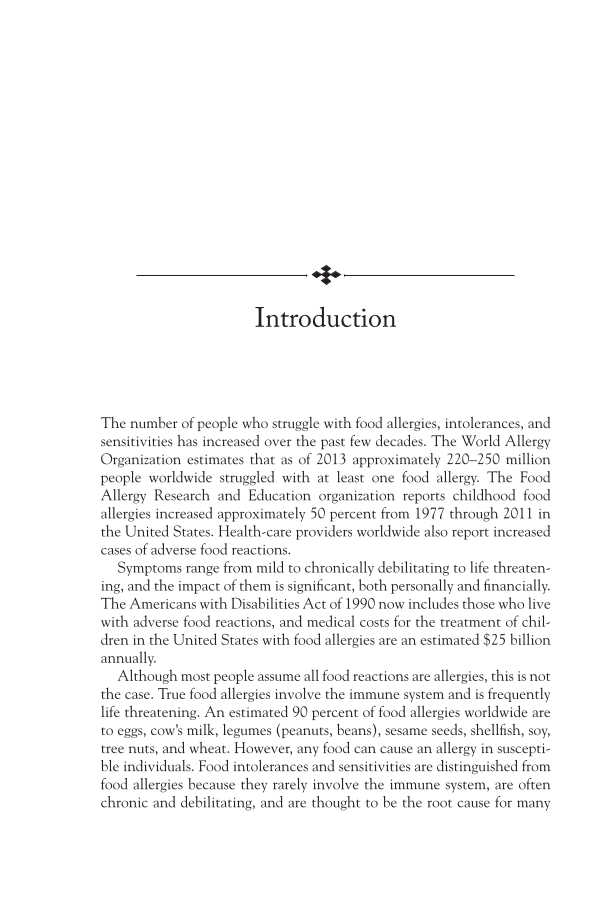The number of people who struggle with food allergies, intolerances, and sensitivities has increased over the past few decades. The World Allergy Organization estimates that as of 2013 approximately 220–250 million people worldwide struggled with at least one food allergy. The Food Allergy Research and Education organization reports childhood food allergies increased approximately 50 percent from 1977 through 2011 in the United States. Health-care providers worldwide also report increased cases of adverse food reactions. Symptoms range from mild to chronically debilitating to life threaten- ing, and the impact of them is significant, both personally and financially. The Americans with Disabilities Act of 1990 now includes those who live with adverse food reactions, and medical costs for the treatment of chil- dren in the United States with food allergies are an estimated $25 billion annually. Although most people assume all food reactions are allergies, this is not the case. True food allergies involve the immune system and is frequently life threatening. An estimated 90 percent of food allergies worldwide are to eggs, cow’s milk, legumes (peanuts, beans), sesame seeds, shellfish, soy, tree nuts, and wheat. However, any food can cause an allergy in suscepti- ble individuals. Food intolerances and sensitivities are distinguished from food allergies because they rarely involve the immune system, are often chronic and debilitating, and are thought to be the root cause for many Introduction
Document Details My Account Print multiple pages
Print
You have printed 0 times in the last 24 hours.
Your print count will reset on at .
You may print 0 more time(s) before then.
You may print a maximum of 0 pages at a time.




























































































































































